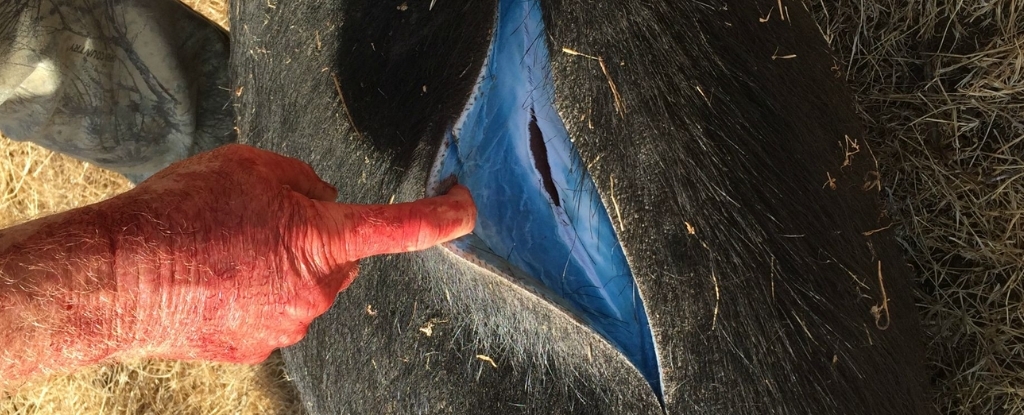
Wild pigs in California have displayed alarming signs of contamination, exhibiting a strikingly neon blue color in their flesh. This unusual phenomenon has raised concerns among game hunters and prompted local authorities to issue warnings regarding potential health risks. According to wildlife control expert Dan Burton, the color is not subtle. “I’m talking about neon blue, blueberry blue,” he stated in an interview with Salvador Hernandez at The Los Angeles Times.
The California Department of Fish and Wildlife (CDFW) has identified the cause of this dramatic color change as poisoning from rodenticides. The affected pigs were found in Monterey County, where local authorities are now advising hunters to exercise caution. Ryan Bourbour, the pesticide investigations coordinator at the CDFW, emphasized the risks, stating, “Hunters should be aware that the meat of game animals, such as wild pig, deer, bear, and geese, might be contaminated if that game animal has been exposed to rodenticides.”
Understanding the Risks of Rodenticides
The rodenticide identified in this case is diphacinone, a first-generation anticoagulant that can lead to severe internal bleeding in animals that consume it. Although diphacinone breaks down more quickly than second-generation rodenticides, it remains active in the tissues of dead animals for an extended period, posing a risk to predators, including humans, who consume the contaminated meat.
This incident is not isolated; it follows previous reports of wild pigs in the region exhibiting similar symptoms. The use of rodenticides like diphacinone has been heavily restricted in California since 2024 due to the potential dangers they pose not only to target species but also to non-target wildlife. Wildlife experts globally have advocated for the reduction of chemical pesticides, highlighting the collateral damage inflicted on various species, from owls to bees.
Consequences for Wildlife and Human Health
The consumption of poisoned animals can lead to health issues for humans, including declining sperm rates, diabetes, cancers, and other serious conditions. Wild pigs, which are hybrids between domestic pigs and wild boars, are particularly vulnerable as they readily consume both poisoned rodents and bait.
To mitigate the risks associated with high-risk pest control methods, integrated pest management has emerged as a safer alternative. This strategy combines various techniques, such as encouraging natural predators, using physical barriers like fences and traps, and implementing other deterrents.
The CDFW is urging the public to report any sightings of blue animals or other abnormalities to the Wildlife Health Lab. This proactive approach aims to monitor and address the potential impact of rodenticide use on wildlife and public health in California.






